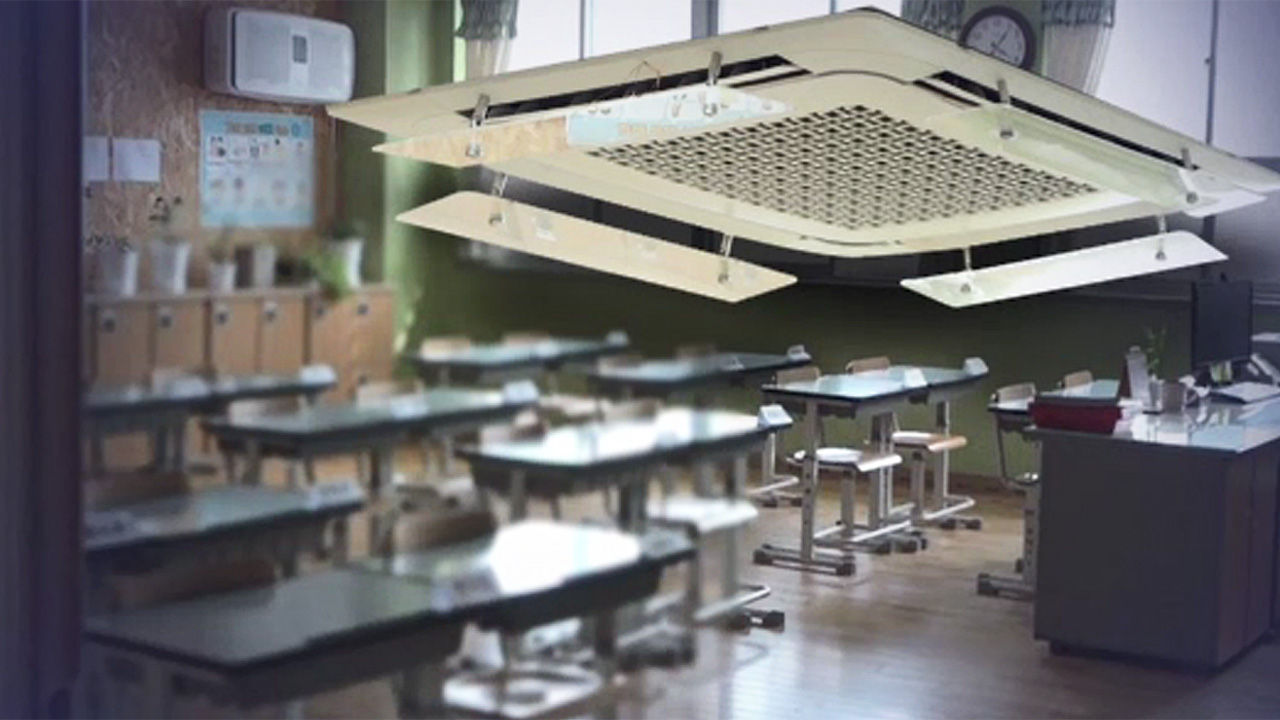<Anchor>
There are more than 2,000 installations in children's schools as there are many places that use gas air conditioners that can save electricity within a few years.
However, it was confirmed that substances such as nitrogen oxides and methane gas are ejected from here.
These emissions from the rooftops of elementary, middle and high schools pose a threat to children's health.
Reporter Kim Hee-nam reports exclusively.
<Reporter> The
rooftop of an elementary school in Seoul.
For cooling and heating, a gas engine heat pump, a so-called'gas air conditioner', has been installed.
[School officials: Nowadays, you have to be warm and cool to study, so you can think of it as going back all year.]
I measured the emissions with an environmental expert.
[Exhaust gas analyzer: This equipment has been type-approved by the Ministry of Environment, so it can be considered suitable for errors.]
Ultrafine dust quickly changed to'very bad' level, and the figure rises to more than 120ppm.
During one hour of measurement, nitrogen oxide, which is classified as a causative agent of ultrafine dust, rose to 230 ppm, and methane, a substance that causes global warming, rose to 1,400 ppm.
Compared to automobile emissions around 0.01g/km or 10ppm, it is 20 times less and more than 100 times more.
[Lee Im-hak/Seoul City University, Environmental Engineering, Research Professor: Can directly harm the human body.
Secondly, when the concentration is high, it can cause dust problems in the atmosphere.]
[Lim Young-wook/Yonsei University School of Medicine Deputy Director of Environmental Pollution Research Institute: (Methane) feels such things as nausea, and it causes digestive problems.]
I looked inside.
The engine for cars with a displacement of 2,000cc is running.
The engine is driven by city gas called clean fuel, but what is the reason why it emits more harmful substances than cars?
[Jung Yong-il/Chairman of the Green Transportation Movement: In fact, engine technology is much more dependent on engine technology than on fuel.
So, the post-treatment technology (reduction device) that applies a catalyst almost reduces the exhaust gas from the engine by more than 80 or 90%.] The
reduction device is also the reason that LPG taxis with lower fuel quality than city gas produce less emissions. is.
As a result of measuring the exhaust gas of aging LPG taxis commissioned by the National Institute of Environmental Sciences, nitrogen oxides were only 8.6 ppm and hydrocarbons 12.3 ppm, which did not exceed the standard.
If so, what is the reason why gas air conditioners do not have a reduction device?
Since 2011, the government has started mandating the installation of heating and cooling equipment that does not use electricity in public institutions.
In this process, the installation of gas air conditioners using engines was encouraged, but harmful emissions were not regulated like automobiles.
We asked for an interview to ask why, but the Ministry of Industry and the Ministry of Environment take responsibility for each other.
[Ministry of Trade, Industry and Energy official: It is a situation where the Ministry of Environment and related organizations have to meet and discuss a little bit...
.]
[Ministry of Environment official: Why don't you ask the Ministry of Commerce, Industry and Energy for the contents of the whole thing at once…
.] In
Japan, gas air conditioners are classified as'small-scale combustion equipment', and the nitrogen oxide emission standard is set within 100ppm.
[Naito Yoshikazu/Tokyo Metropolitan Air Conservation Manager: Certified products may be sold with such a label.
A system that can be used for public relations has been decided.]
There are 15,000 buildings with gas air conditioners installed nationwide, and 2,200 of them are schools.
Cars that do not have a reduction device are emitting smoke that threatens health and the environment from the rooftops of schools and public buildings across the country.
[Ahn Mun-su/Chairman of the Korea Environmental Impact Assessment Society: It may have been an appropriate response in terms of energy supply and demand, but it seems that it is a measure that is very
poorly
considered in terms of environment.]
To be cool, shorten life...
.]
(VJ: Minshin Ahn)

